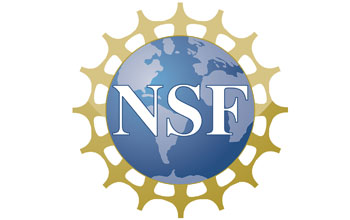Quick link to our code and benchmarks
Quick link to our team on AGU TV
Quick link to the deepLDB landslide project website
Quick link to the soil moisture forecast website
Research Interests
Our research focuses on advancing the fundamental understanding of the interactions between hydrology and other subsystems (e.g., ecosystems, energy and carbon cycles, solid earth and channels). Water scarcity and excess create varied conflicts and competitions in different parts of the world, and drastic changes in the water cycle put stress on natural and societal systems. Importantly, the changes in water states and flows are a significant driver for changes in other systems. We strive to provide sound physical science, produced by data, data-driven, and process-based models, to support decision-making from catchment to global scales. Meanwhile, our fundamental understanding of the hydrologic cycle, despite decades of research, still has much to be improved. We strive to identify commonalities and learn underlying principles.
Our methods include state-of-the-art deep learning (DL) and physics-based hydrologic models. Recently, we demonstrated a genre of physics-informed machine learning called "differentiable modeling". Differentiable models mix process-based equations (called priors) and neural networks (NNs) at a fundamental level, so they can be trained together in one stage (called "end-to-end"). This way, the network components can be supervised indirectly by outputs of the combined system, and do not necessarily need training data for their direct outputs (such as model parameters). Differentiability can be supported by automatic differentiation, adjoints, or any other method that can efficiently produce gradients of loss with respect to large amounts of parameters. Such models can train a neural network using big data while respecting physical laws, improving the generalizability, robustness, and complexity of the learned relationships. We have found massive scale, efficiency, and performance advantages with differentiable models in rainfall-runoff, routing, ecosystem, and water quality modeling. Our newest version even surpasses state-of-the-art LSTM models in data-dense regions. See our benchmarks for more information.
Our hydrologic deep learning and differentiable model codes are open source and publicly available.
Besides machine learning, another tool we used in the past is the Process-based Adaptive Watershed Simulator (PAWS), a comprehensive, computationally-efficient parallel hydrologic model designed for large-scale simulation. The model is coupled to the Community Land Model (CLM), and therefore is able to simulate carbon/nitrogen cycling, ecosystem dynamics, and their interactions with the water cycle. PAWS is now open to all users. READ repo access will be granted to anyone who requests it by sending an email to cshen@engr.psu.edu.
Recent News
Really glad to receive the recognition as a Clarivate Highly Cited Researcher 2025 (Cross-Field) . See their criteria and analysis here https://clarivate.com/highly-cited-researchers/analysis/.Also honored to be recognized by Penn State Institute of Energy & Environment (IEE) as IEE Person of the Year.


High-quality, high-resolution global- and continental-scale hydrologic datasets presented for scientific use and community evaluation. These models use our multi-scale training methods on thousands of stations, and is able to produce outputs at unit basin resolution (6 km2 hydrofabric basins over CONUS and ~37 km2 MERIT basins around the world). State-of-the-art daily simulations in streamflow have been demonstrated. Please also see news articles. Improving predictions of flood severity, place and time with AI and AI-powered model predicts floods, improves water management worldwide.


Jan/25 Our paper "Sensitivity-Constrained Fourier Neural Operators for Forward and Inverse Problems in Parametric Differential Equations" has been accepted into the main session of International Conference of Learning Representations (ICLR), 2025, a top-ranking Artificial Intelligence conference. This work fundamentally changes how surrogate models are trained, leading to highly efficient, accurate and generalizable AI surrogate models, with correct sensitivities to large amounts of inputs and reliability even in the face of significant perturbations. It also shows that domain experts can bring unique perspectives into the general AI community. Stay tuned for the camera-ready version of the manuscript! See you in Singapore this April!

Dec 24, Shen coauthored paper "Increasing Phosphorus Loss Despite Widespread Concentration Decline in US River" is published on Proceedings of the National Academy of Sciences.
We put a preprint of the differentiable national water model with sample prediction dataset online! This is a high-quality, high-resolution seamless streamflow data covering the entire United States.
Please read our papers on differentiable parameter learning (dPL) and differentiable modeling (DM), pictured below! We believe differentiable modeling combines the best of neural networks and physical equations and represents the next stage of environmental modeling.


Shen's book chapter, Applications of Deep Learning in Hydrology, is now online.
Through volunteer work, our group brought online a deep-learning-based tool to track soil moisture changes in Africa/Asia to help combat locust swarms which threaten global food security.
We greatly appreciate our funding organizations, including:









